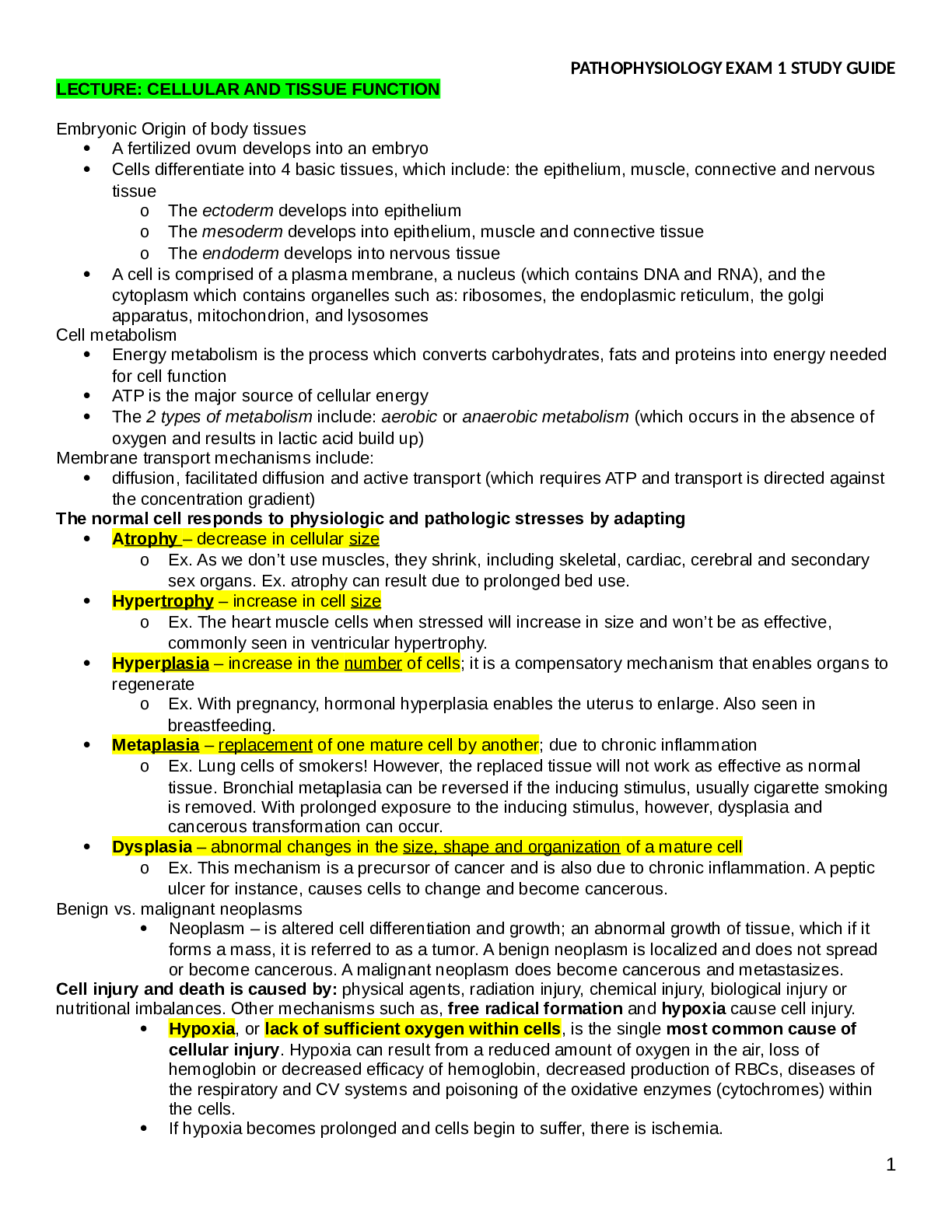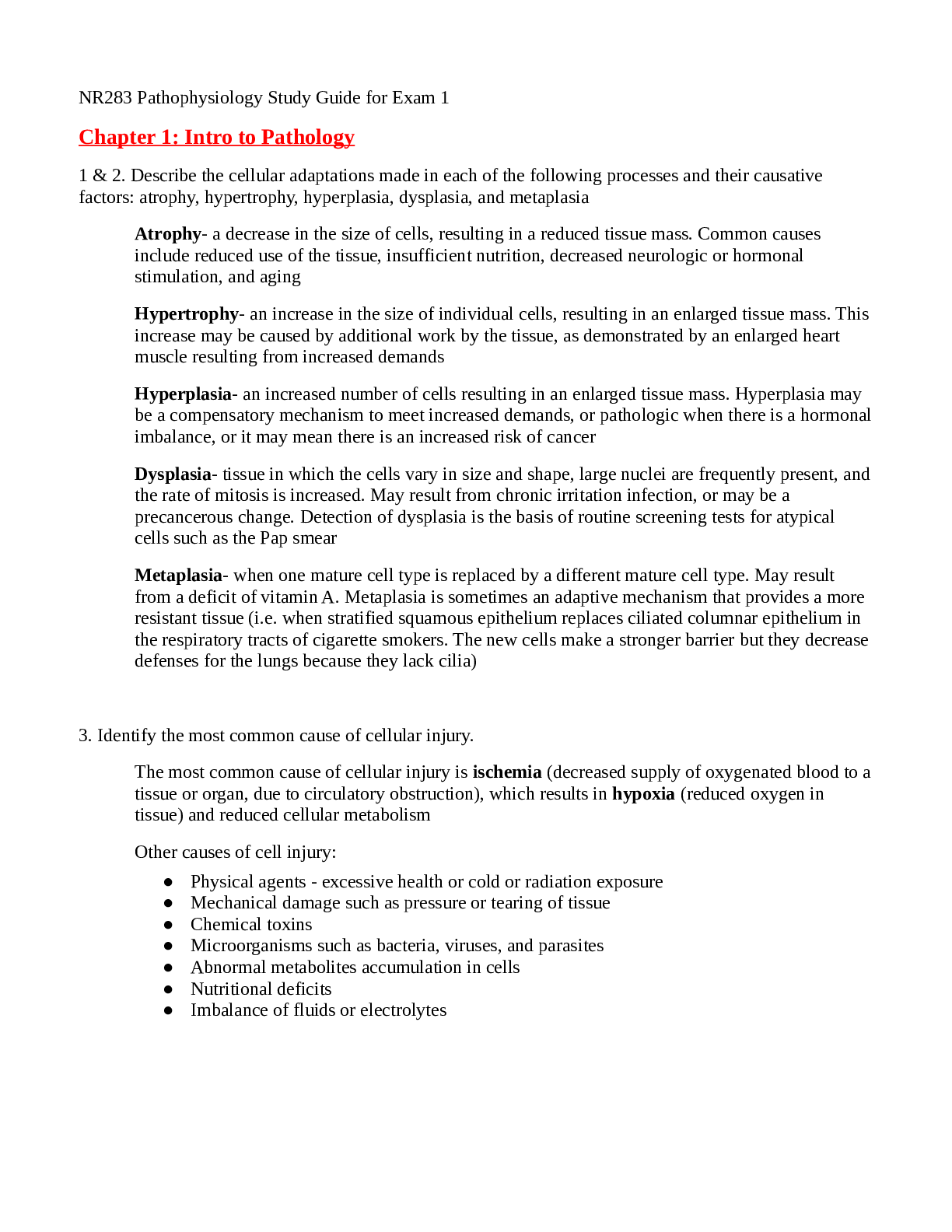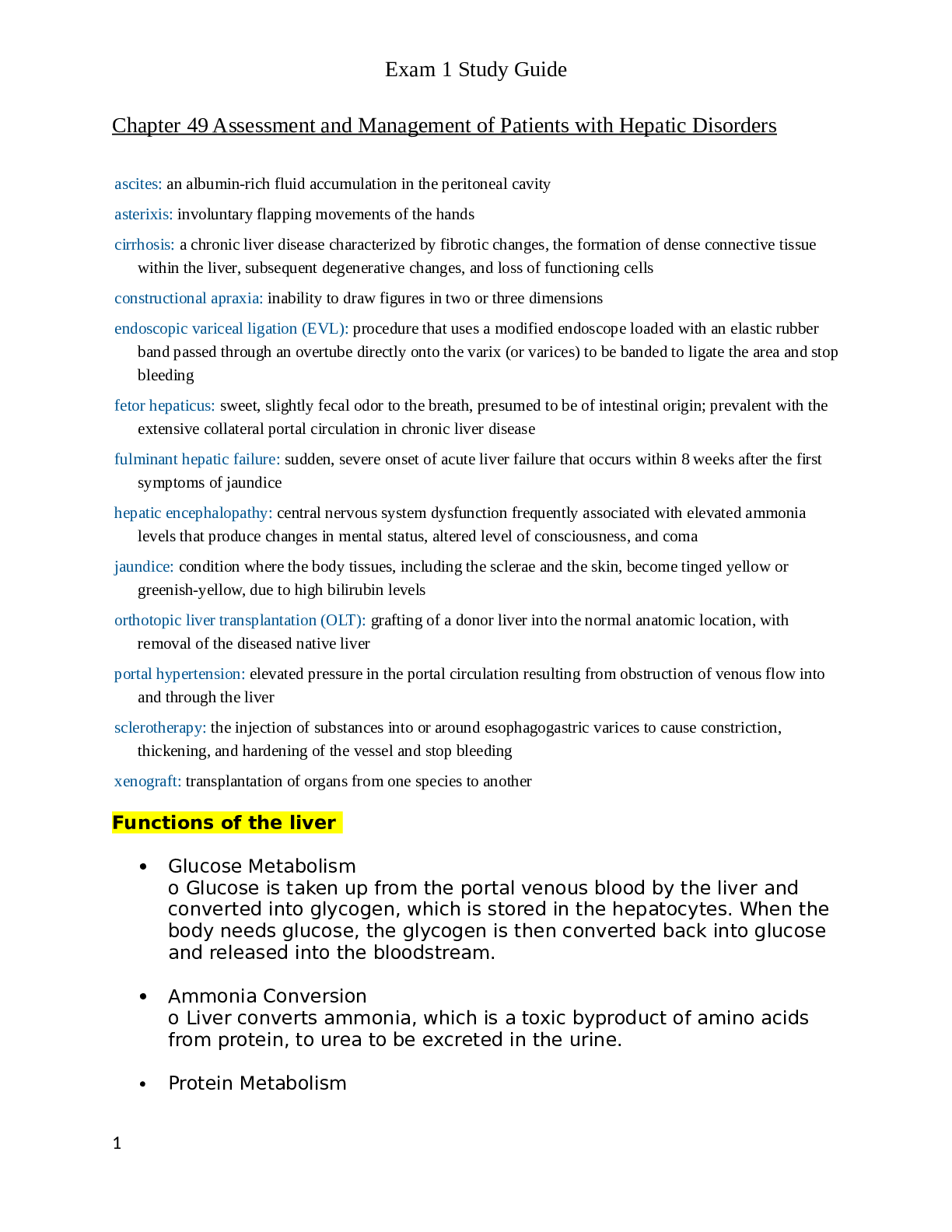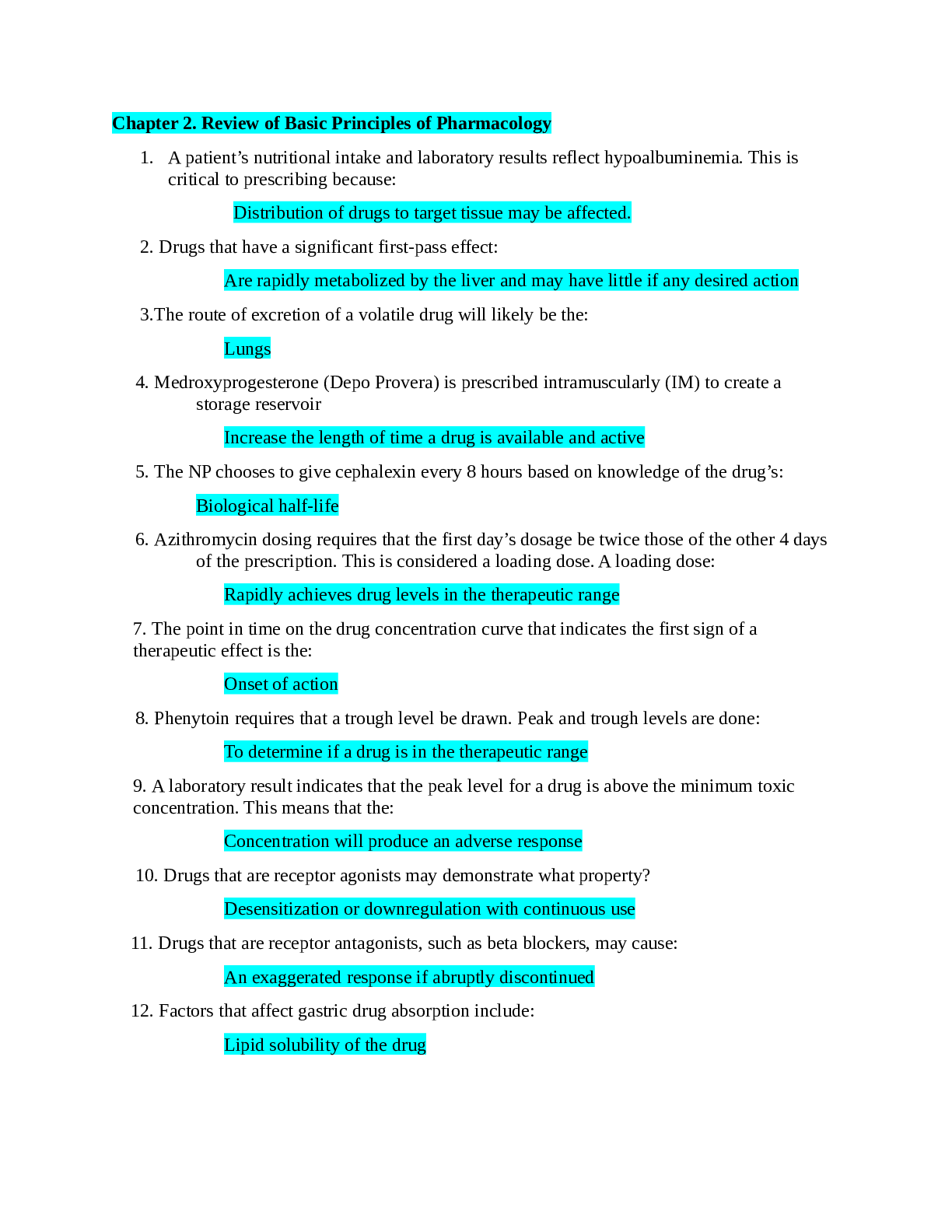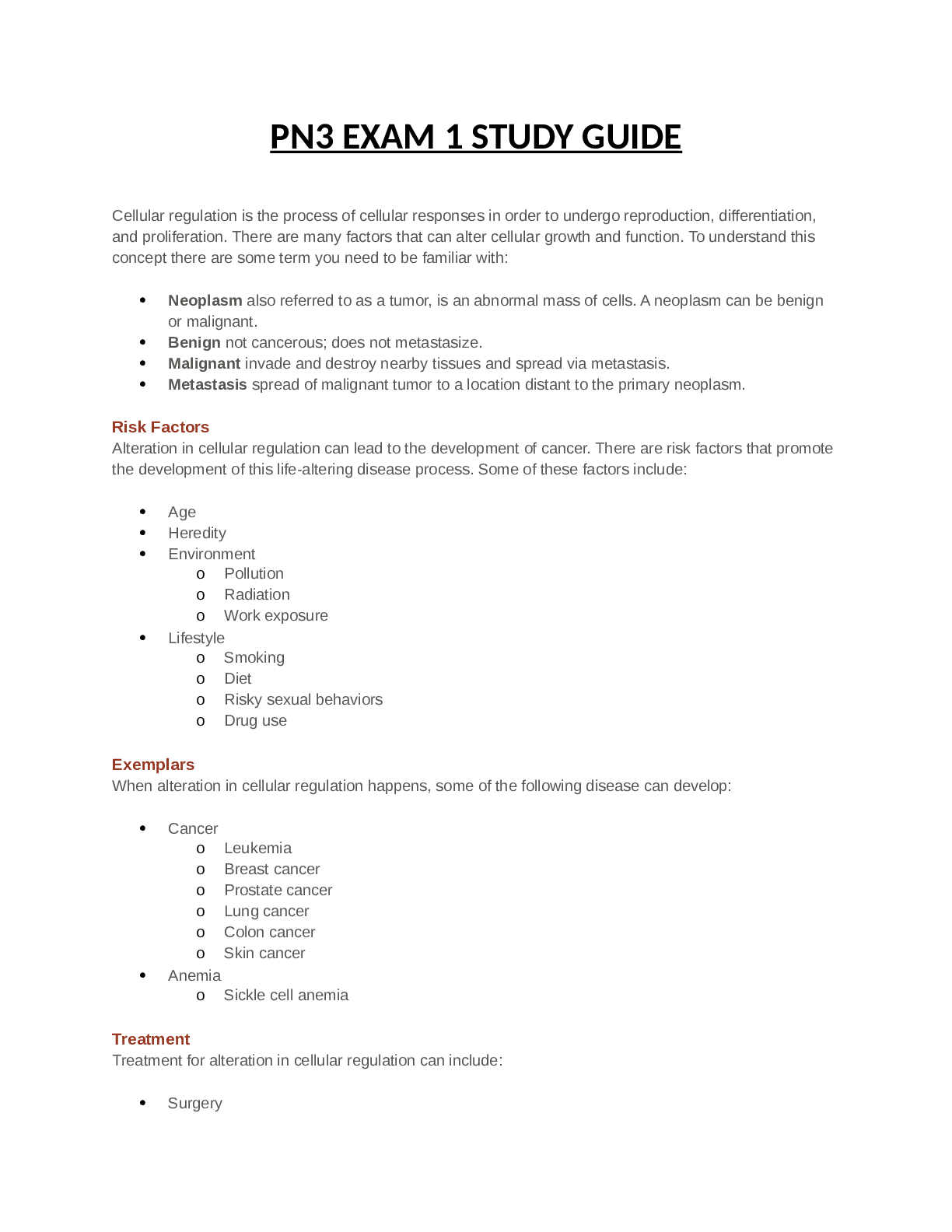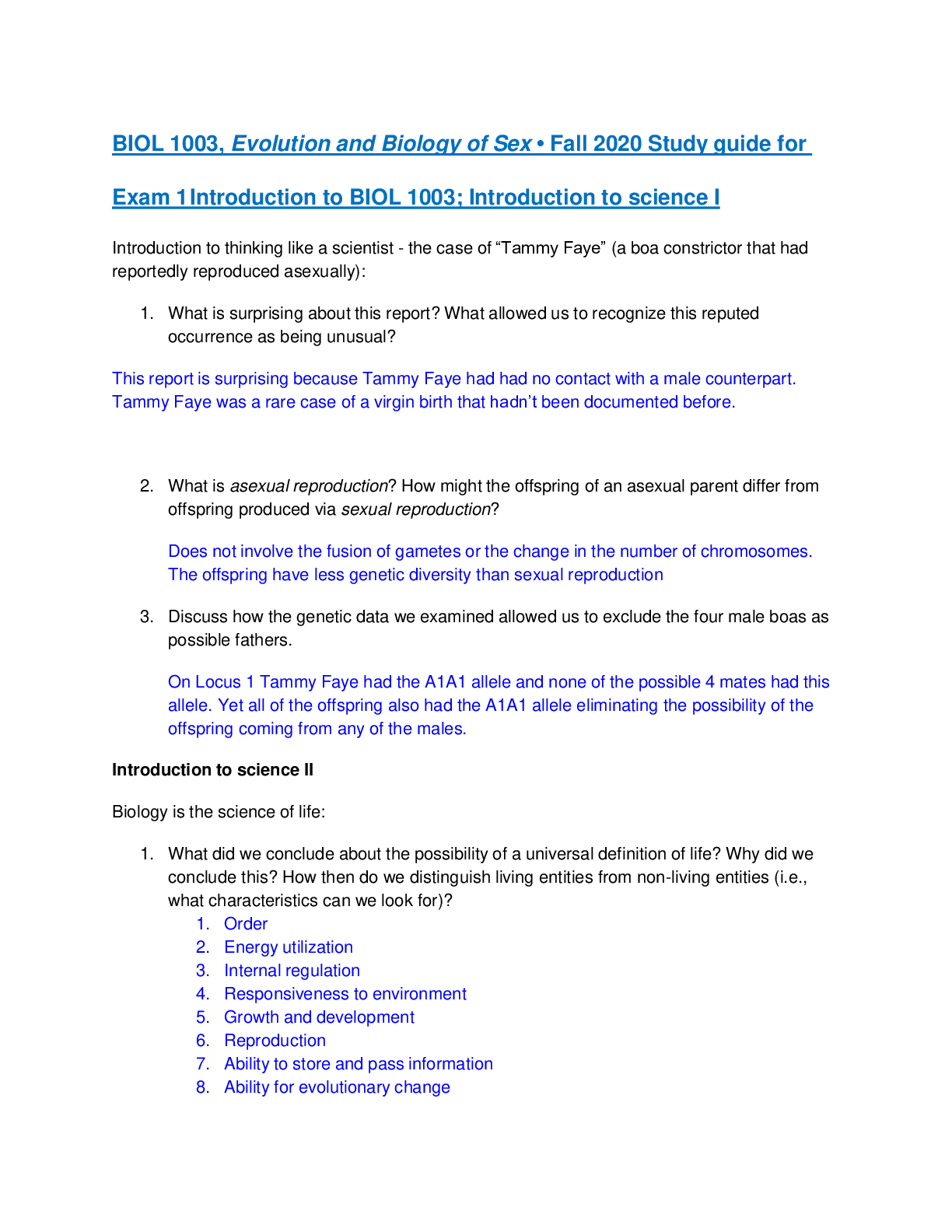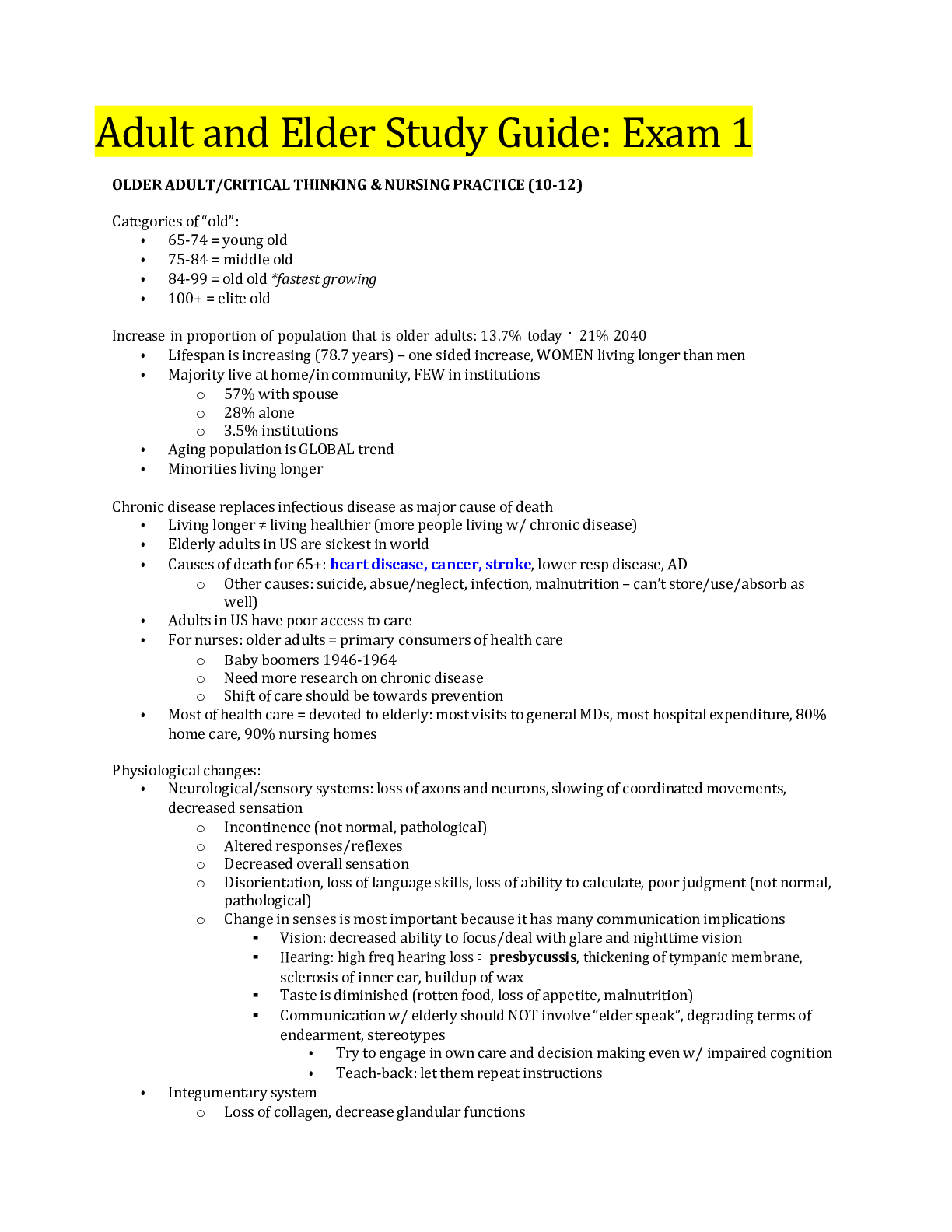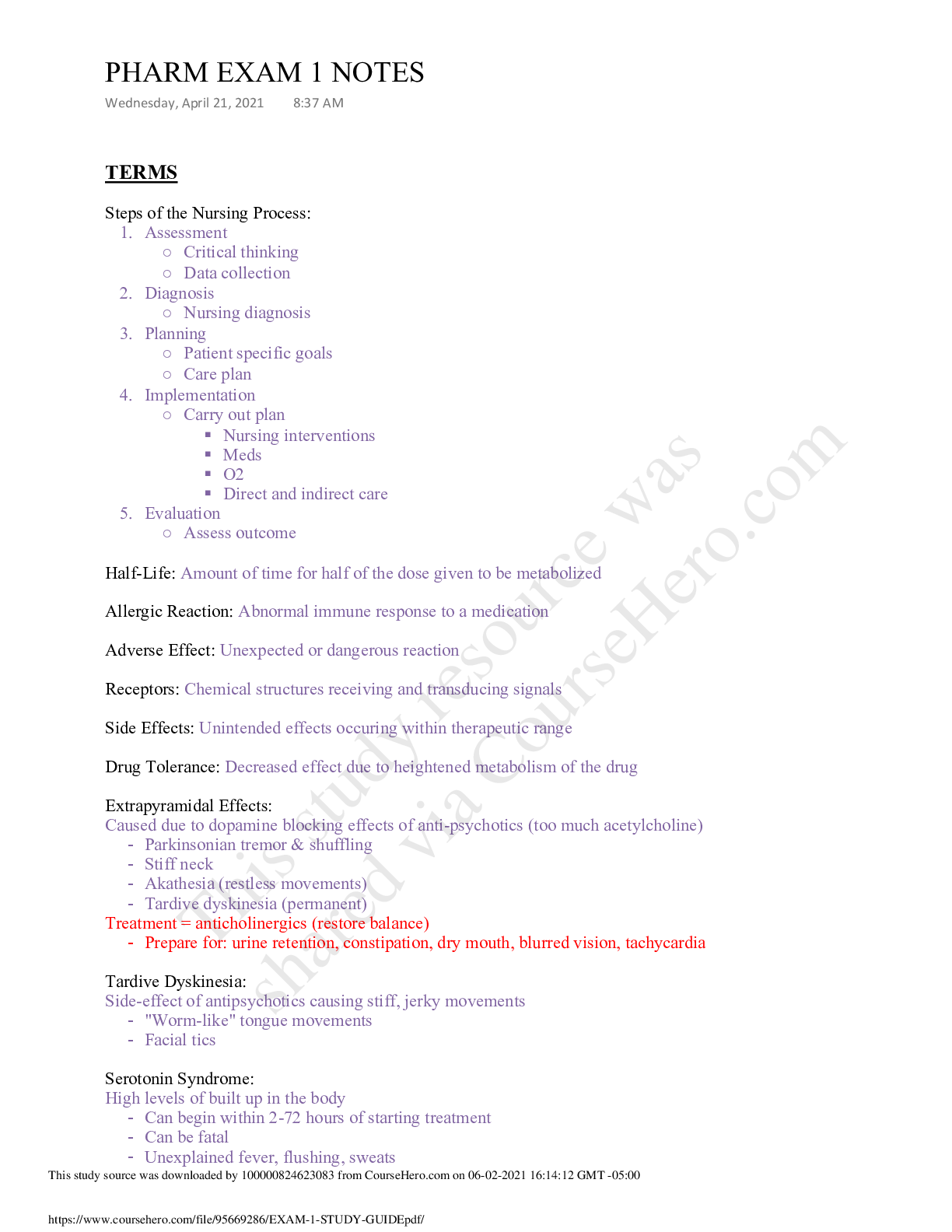*NURSING > STUDY GUIDE > Pharmacology EXAM 1 Study Guide. All the exam Quick-Study essentials for 1. Module 1: Principles of (All)
Pharmacology EXAM 1 Study Guide. All the exam Quick-Study essentials for 1. Module 1: Principles of Pharmacology (Reading assignment: chap. 1,2,4,5) 2. Module 2: Pharmacological Effects on the Autonomic Nervous System (Reading assignment: chap. 18-21) 3. Module 3: Pharmacological Effects on the Central Nervous System (CNS) (Reading assignment: chap. 10, 12, 14).
Document Content and Description Below
Module 1: Principles of Pharmacology (Reading assignment: chap. 1,2,4,5) Introduction A. Basic terms Nurses use pharmaco-therapeutics daily o Understand pharmacology o Substance use- causes ... cellular changes and then cause a o Reaction-(hope) be a positive reaction Pharmacokinetics: what the body does to the drug Pharmacodynamics: what drug does to the body Understand side effects/adverse reactions And drug chemistries such as: half-lives/therapeutic index B. Drug properties Efficacy: maximal response drug can produce Potency: index of how much to give for desired response Drug (Characteristics): (3) o Effectiveness- Drug does what it is intended to do Most important properties U.S. Laws require to be proven effective before released for use o Safety Does no harm, even if given at high doses for a long time (there is no drug safe at that level) Proper dosing and selection should reduce the adverse effects o Selectivity only produces the outcomes intended. There are no side effects Know how to administer and signs to watch for “There is not thing as a safe and selective drug” There is laws and rules to protect the patient C. Therapeutic objective GOAL FOR DRUG USE: Provide maximum benefit with minimum harm Other factors for drug selection: o Administration ease o Stability o Cost D. Drug intensity (factors): Administration dosage size, route and timing are critical (medication errors, patient adherence) Pharmacokinetics the impact of the body on drugs (absorption, distribution, metabolism, excretion) Pharmacodynamics Determines the responses a drug elicits (drug receptor interaction, patient’s functional state, placebo effects all determine drug elicited responses) Characteristics specific to each patient gender, age, weight, mayor organ function & potency of drug administered II. Pharmacology applied in nursing practice A. Nursing responsibility (roles of the nurse) The 6 rights of medication administration Goal for drug use: Promote benefits and minimize harm You just don’t give the medication with the 6 rights Must anticipate patient reactions Recognize when they occur and respond to them efficiently and appropriately Must know drug for the patient Contraindications for a positive therapeuti Module 2: Pharmacological Effects on the Autonomic Nervous System (Reading assignment: chap. 18-21) Introduction: Module 2 will focus on medications that affect Peripheral Nervous System (PNS) o With the main focus on the Autonomic Nervous System (ANS) o Module 3 will address medications that affect the Central Nervous System (CNS) Medication class study- Very important to understand: o How they work o Potential frequent side effects o Therapeutic responses (how we know the medication is working) o Nursing concerns (such as assessments before and after and other interventions for example take medication with food or give at bedtime etc.) I Review anatomy and function of the ANS and Classification of the ANS drugs B. Basic mechanism- ANS affects everything!!! Principles Functions of the ANS o Regulation of the heart The autonomic nervous system regulates the heartbeat When a person is stressed, the sympathetic nervous system activates and the heartbeat will increase When the person is relaxed the heartrate will decrease The role of the nurse is to recognize an increase or decrease in the heart rate. This will help us understand when we need to intervene and change the rate. With experience we will learn when high is too high and low is too low o Regulation of secretory glands Increase or decrease secretions o Regulation of smooth muscle How will your patient present with each function listed? o Bronchi: constriction or dilation o Blood vessels constriction or dilation (Increase or decrease BP) o GU: contraction or relaxation of the bladder o GI: Increase or decrease of GI motility o Eye: pupil constriction or dilation IX. Receptors A. Increase receptor activation/increase transmitter synthesis B. Decrease receptor activation/decrease transmitter synthesis Module 3: Pharmacological Effects on the Central Nervous System (CNS) (Reading assignment: chap. 10, 12, 14) Analgesics o Medications that relieve pain without causing loss of consciousness. o Patients ask for “Painkillers” in the right does o Opioid analgesics- high potency o Adjuvant analgesic drugs- lower potency Non opioid- provides pain relief through other pathways. Familiar medications, OTC. o Opioid is the new term for narcotics. o Narcotics are used for illegal street drugs. o What is pain? Pain results from stimulation of sensory nerve fibers called nociceptors. These receptors transmit pain signals from various body regions to the spinal cord and brain for processing. Pain is whatever the patient says it is whenever the patient says it is. In past, nurses were encouraged to help the patient endure and learn to tolerate the pain to prevent addiction. Research supports medicating for acute pain so the patient can heal faster and move around more. It prevents many complications from immobility and long hospital stays. Adjuvant Drugs o Work with and add to the opioid regiment of pain relief. Such as ibuprofen, Advil, Tylenol, Morten, acetaminophen. Primary drugs in relieving pain- ex. Ibuprofen o NSAIDs (non-steroidal anti-inflammatory drug)-blocks the production of prostaglandins (prostaglandins are tissue irritants and promote nerve irritation and contractions of smooth muscles) Mild-mod. pain NSIADS work well for menstrual cramps, muscle and tissue injuries. OTC dose of ibuprofen is 200-400mg every 6-8 hours (1-2 TABS) Common to give 800mg every 8 hours in the hospital to women who gave birth. It is very effective especially when alternated or combined with an opioid. o Opioids-block pain receptors from receiving pain signals Mod-severe pain Dosage is generally higher for severe pain like immediate post-surgery or heart attack. We must monitor closely for respiratory depression. Always be aware of respiratory depression o Anticonvulsants-effective with nerve pain Pain that arises from nerve sources. Diabetic or cancer neuropathy may cause severely shooting/ tinkling pain. Adding an anticonvulsant to the treatment regimen allows [Show More]
Last updated: 1 year ago
Preview 1 out of 19 pages

Reviews( 0 )
Document information
Connected school, study & course
About the document
Uploaded On
Apr 02, 2021
Number of pages
19
Written in
Additional information
This document has been written for:
Uploaded
Apr 02, 2021
Downloads
0
Views
50

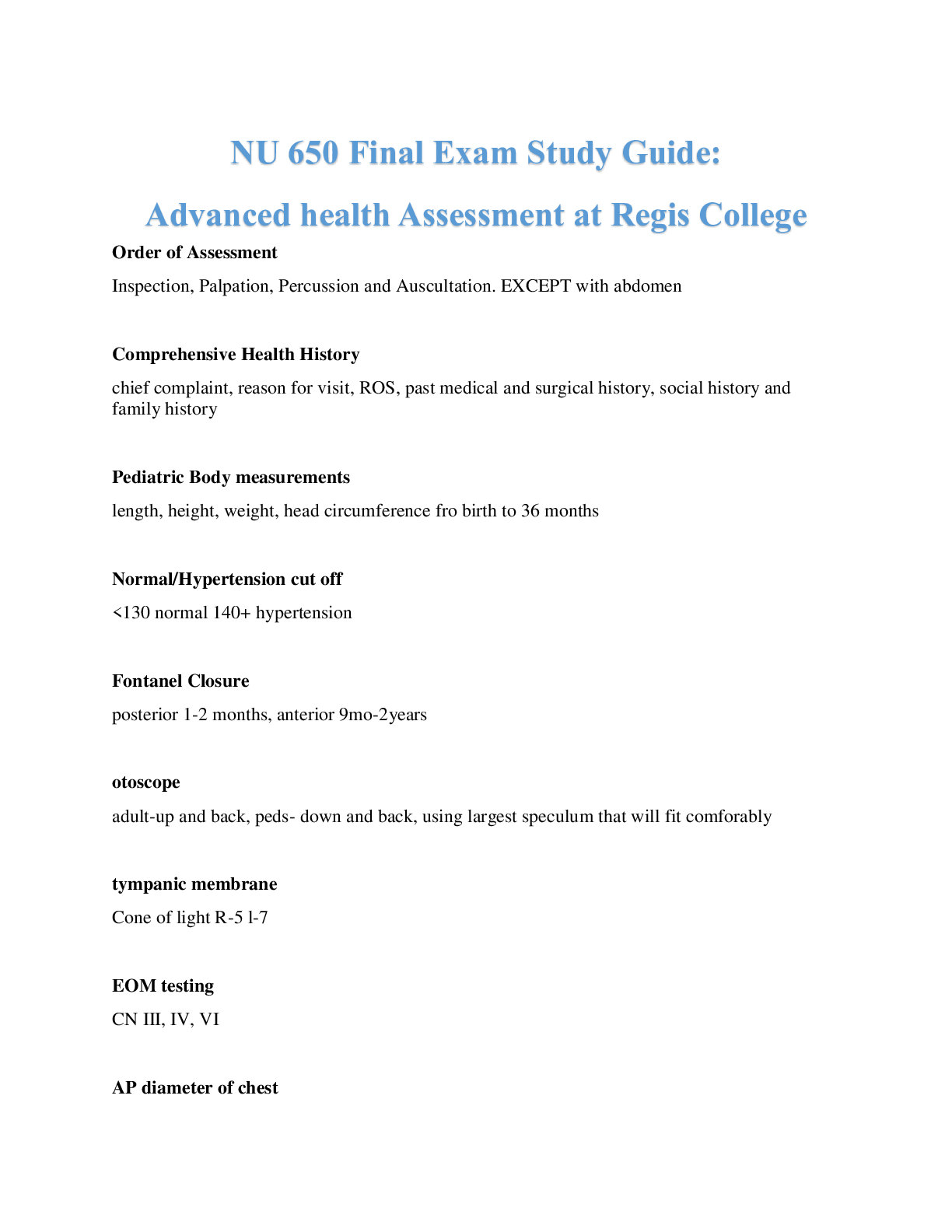
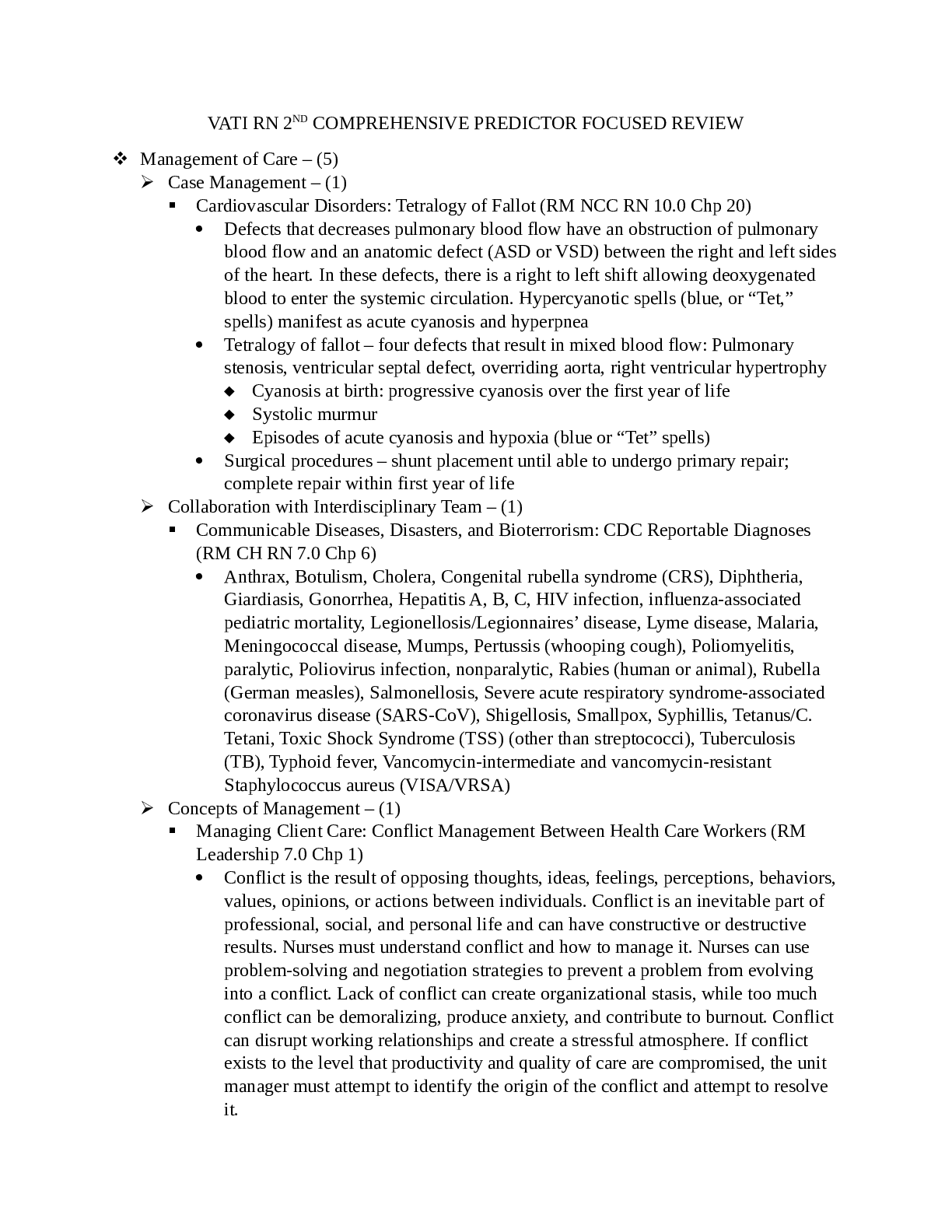
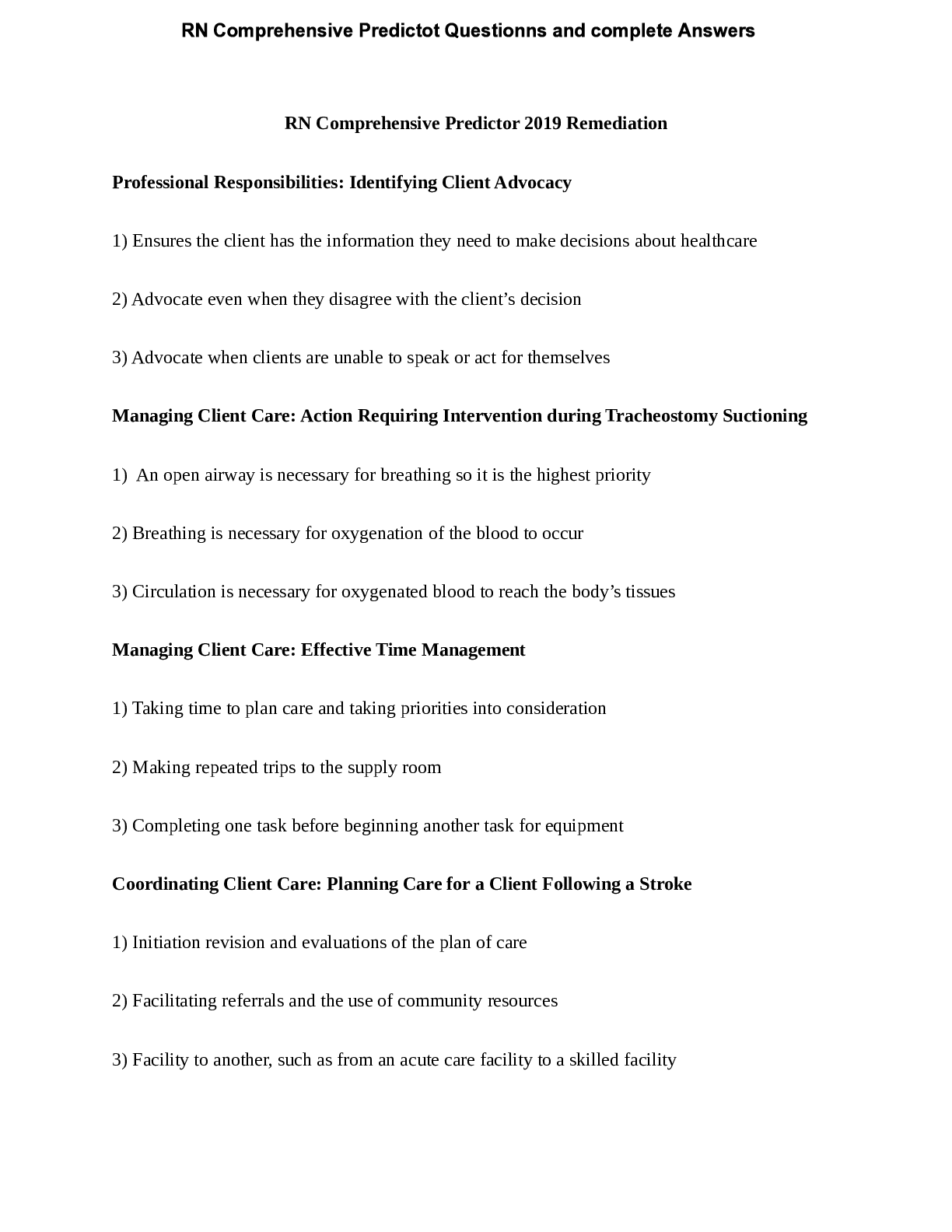






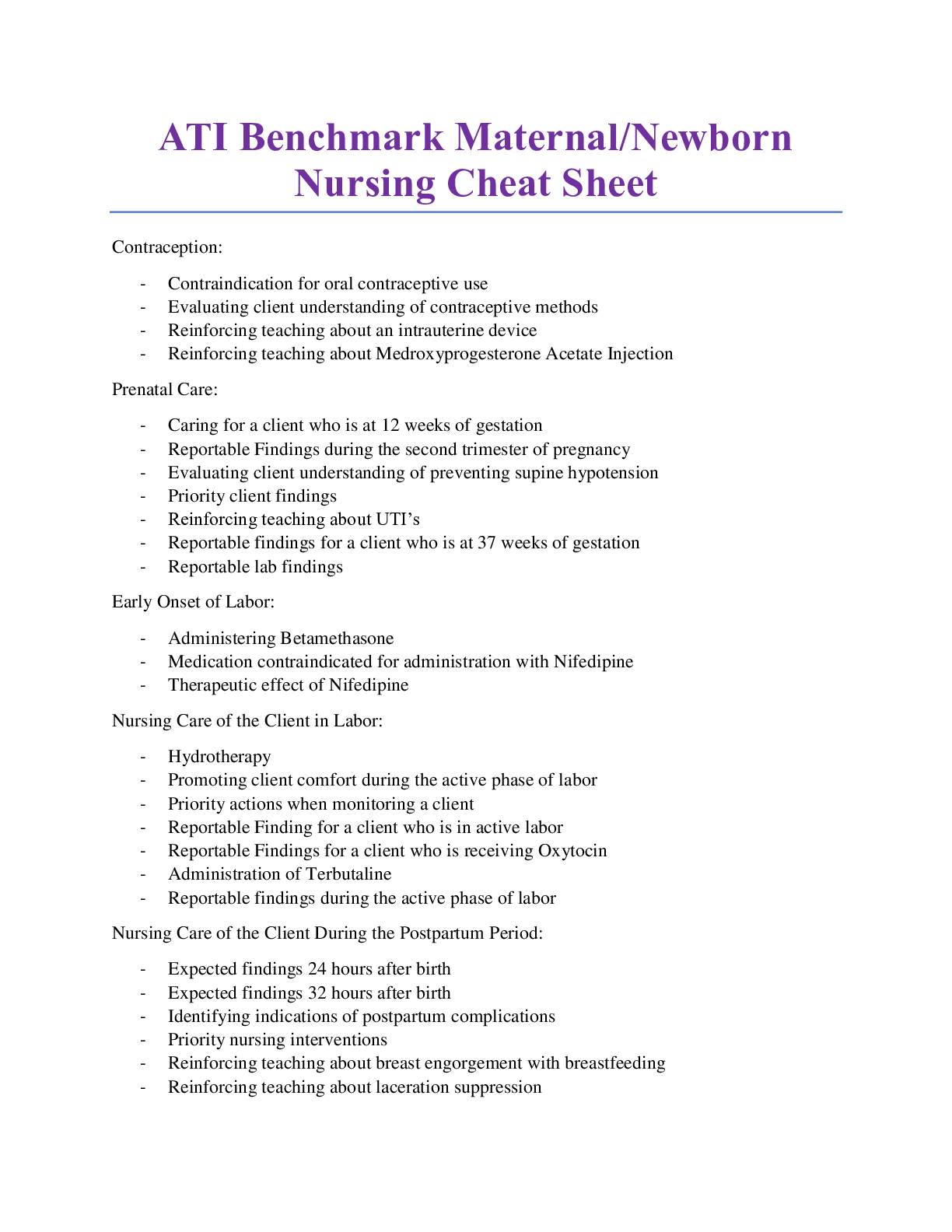

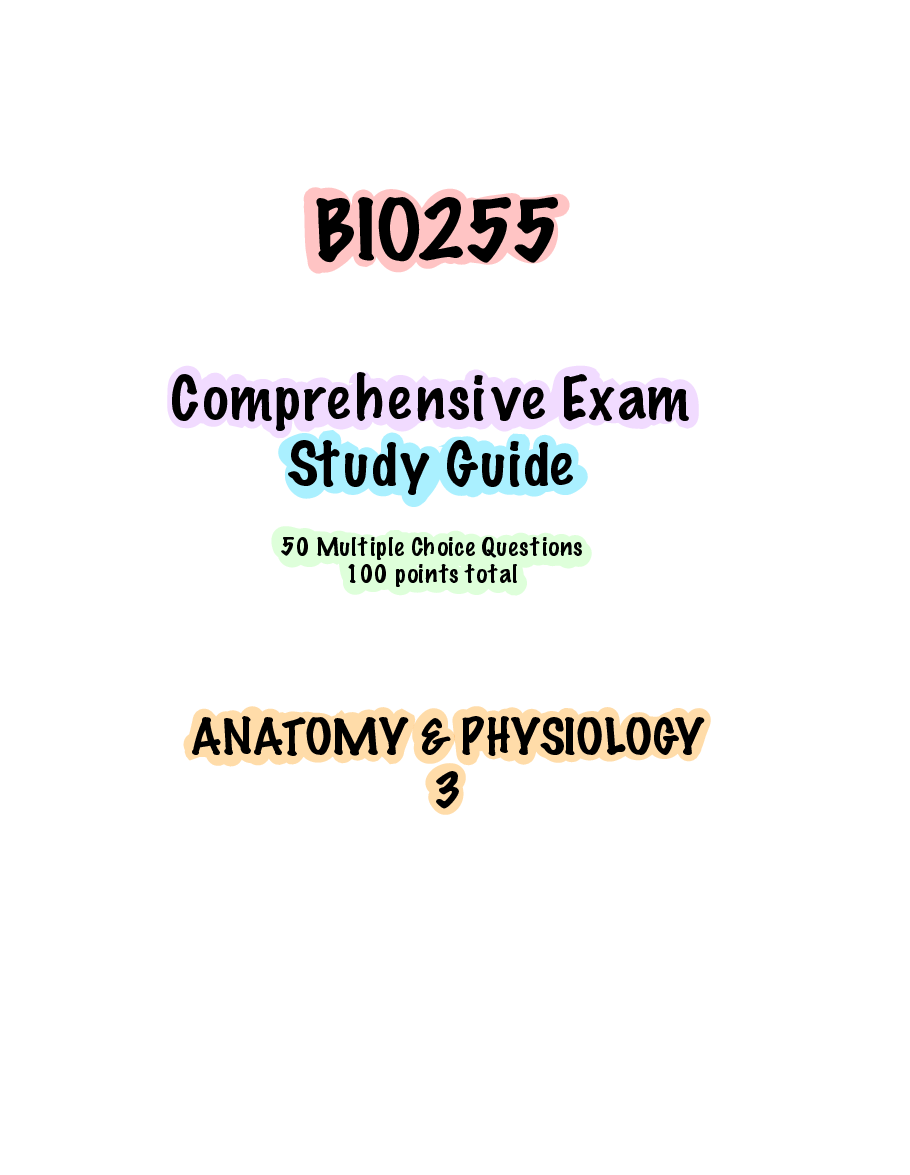
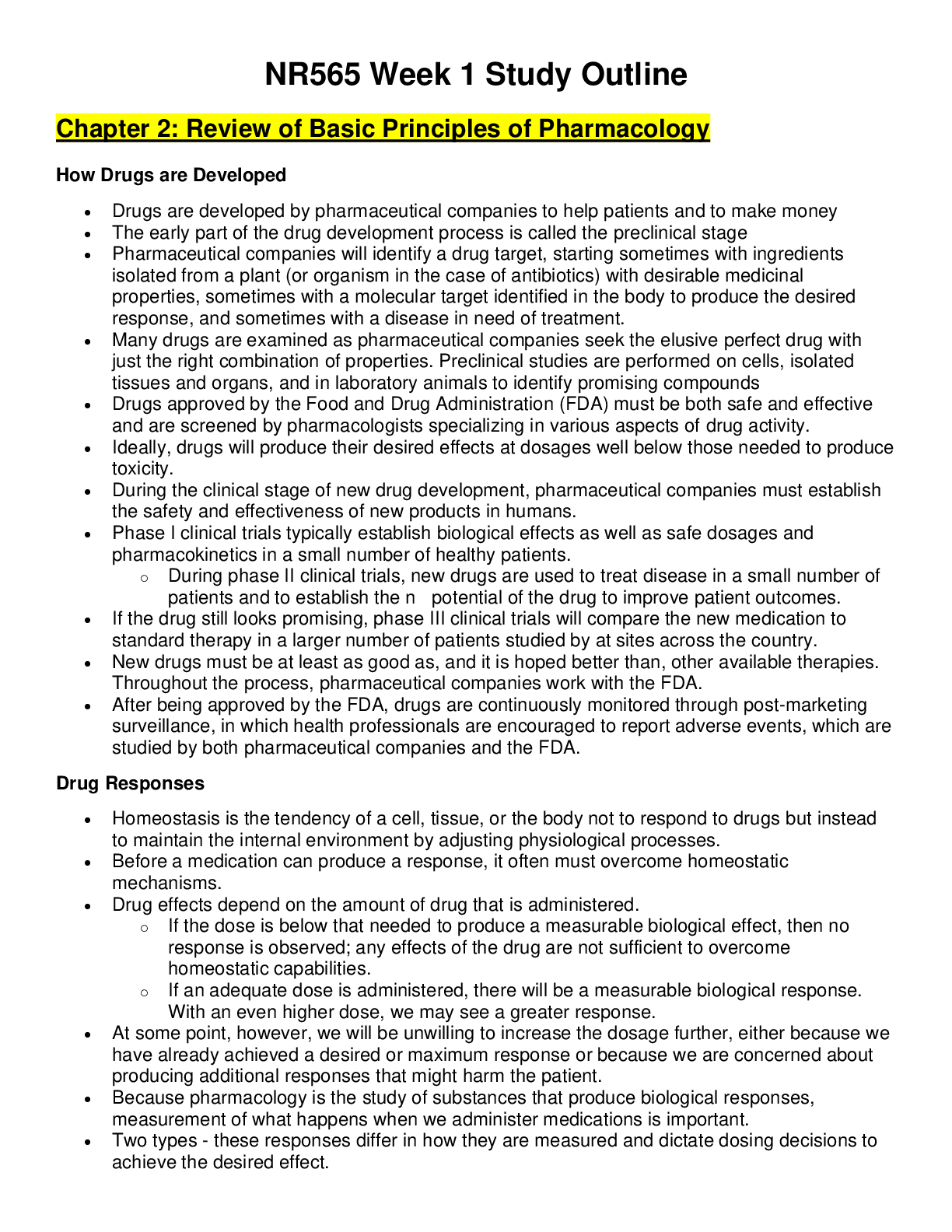

.png)


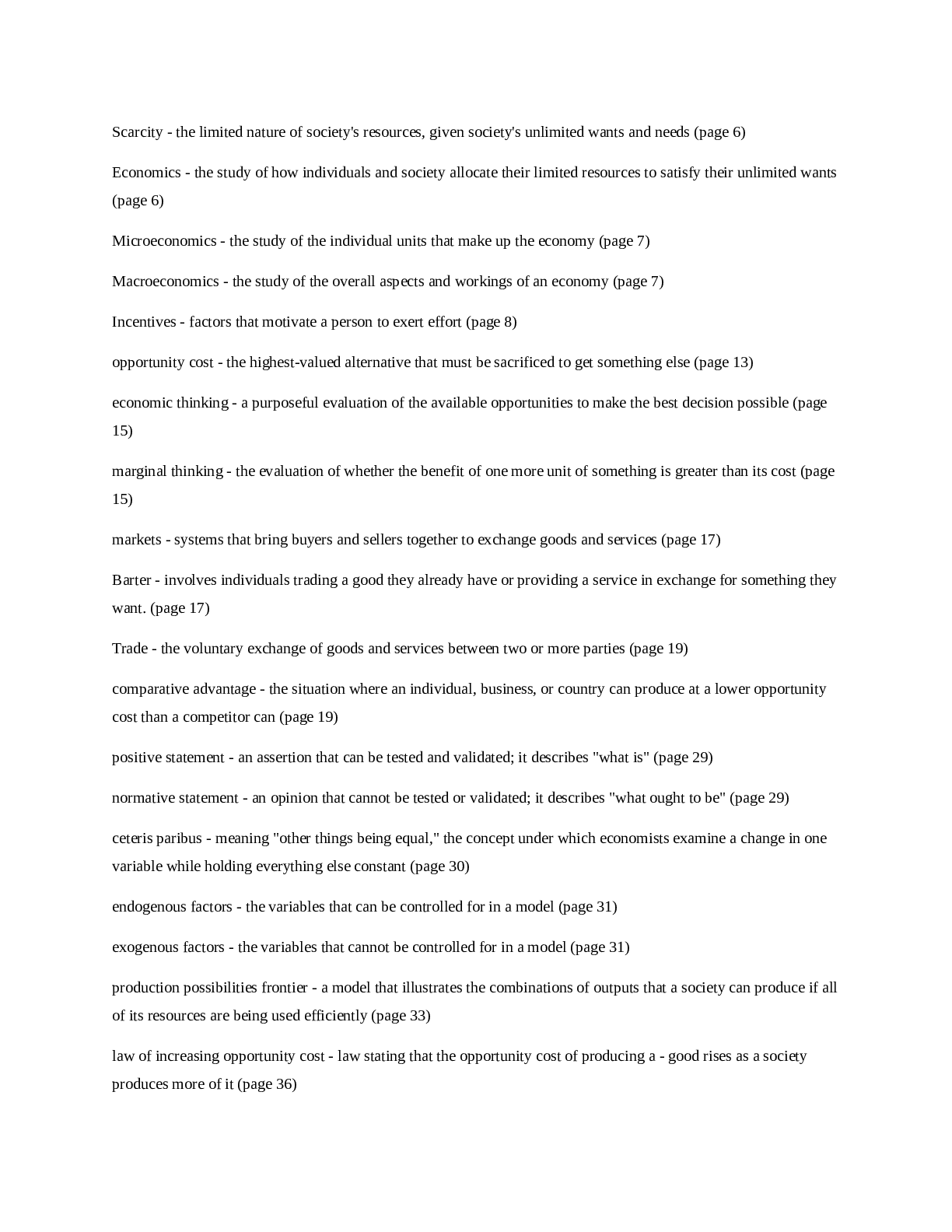
.png)
